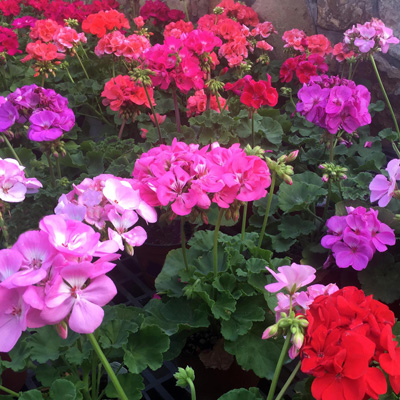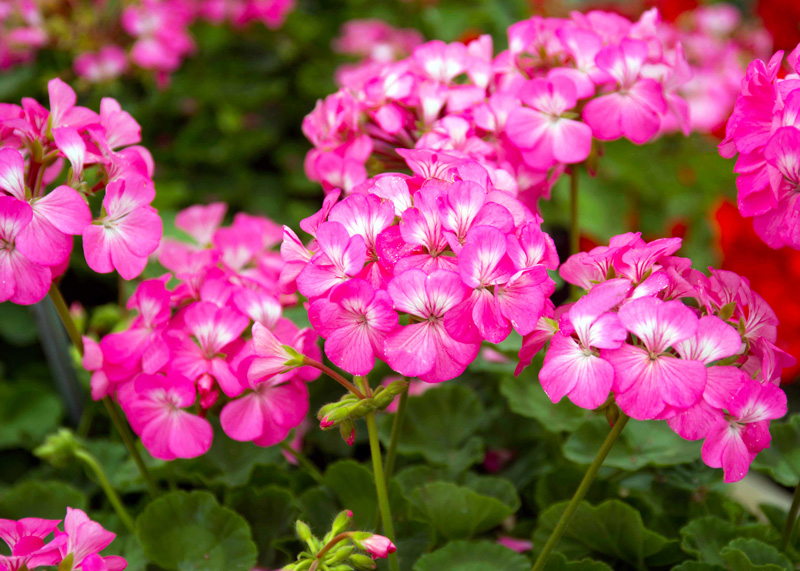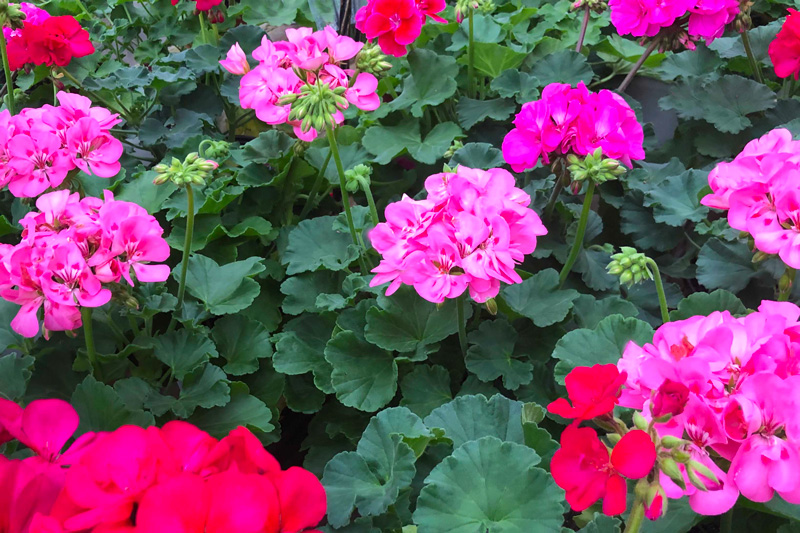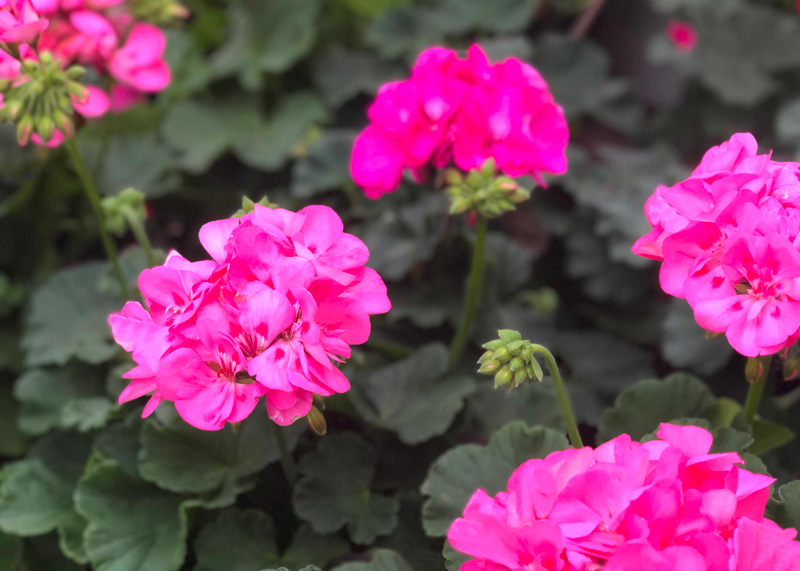Months of Glorious Color
I did my first live radio ads for geraniums just this past weekend, and I’m going shopping as soon as I can. There’s just something about their cheerful colors and bright foliage that makes spring sparkle in Texas.
If you’re originally a northerner, as so many Texans are, you knew this plant as one you set out in late spring, enjoyed all summer and figured some way to save when first frost came in October.
But now you’re a Texan, and we handle geraniums a little bit differently. Or at least we ought to because they’re not fond of our summers.
Wise gardeners buy geraniums in early March (or February in South Texas), plant them in pots for the entry, pool, or patio, and enjoy them until the sun starts to take a toll on their foliage.

Let’s summarize the basics…
There’s not much to learn here. Just a few simple steps and you’ll be on your way to enjoying them.
• Buy geraniums early. You’ll get the best selection and you’ll be able to take advantage of sunny, cool weather. Most of our “fancy” geraniums prefer high temperatures in the 70s or 80s more than anything warmer. Their best months are March through May and into early June.
• Give them full or nearly full sun. Like most other flowering annuals, these bloom best in good light. Excessive shade reduces bloom count, and it also results in lanky, stretched plants.

• Buy healthy, vigorous plants, probably in 6-inch pots. Look for leaves that are bright green and free of any signs of insects or fungal leaf spots. The flowers should just be starting to open.
• Grow them in pots. Geraniums appreciate the mobility and good drainage of being grown in large containers. You can move them inside when it’s freezing or out of the afternoon sun in the summer.
• Use a lightweight, highly organic potting soil. It’s wise to have as much as 10 or 15 percent of the potting soil made up of expanded shale to give it more weight. The plants can become top-heavy in the spring winds.
• Apply a high-nitrogen, water-soluble plant food. Fertilize them each time that you water. Let the plants begin to get slightly dry before you water again, then soak their soil thoroughly.
• Groom the plants to remove old flower heads. Snap the old heads off with your thumbnail and fingers rather than using a knife or shears. If there are vascular diseases in the plant (a problem with geraniums in your Grandma’s era), they can be transmitted on the knife’s surface.
• Heat and sun are their enemies. As temperatures climb into the 90s consistently in late May and June, expect your geraniums to start going downhill. Production of flowers will grind to a stop, and leaves may even begin to turn pale. If you want to try to bring your plant through the summer, keep it moist and out of the sun. Avoid the high-nitrogen feedings at that time. Move the pot back into the sunlight once it starts to cool in the fall.
• Try your hand at propagating them. Geraniums are started from stem cuttings that are about 5 inches long. Let them dry and callous for a day or two before you stick them into a very porous rooting medium in pots.
The newest trend in geraniums over the past 40 or 50 years has been in growing them from seed. Current-day hybrids are outstanding plants, but it’s too late to start them now for your spring enjoyment. Keep them in mind for next year. Look for them as potted transplants in nurseries now.



